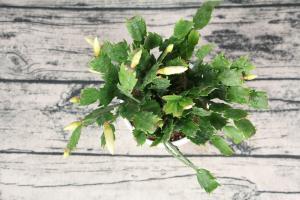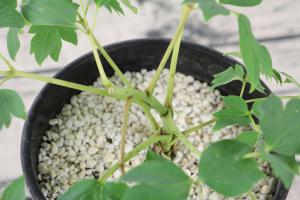How to prune overgrown tomato plants
Tomato plants are known for their fast growth rate, but if not pruned regularly, they can become a tangled mess that produces fewer fruits. Pruning is essential to prevent overgrowth, encourage better airflow, and promote fruit development. In this article, we’ll discuss how to prune overgrown tomato plants effectively.
1. Understand the basics of tomato pruning
Before you prune your tomato plants, you need to understand how it works. The first thing to know is that tomato plants grow two types of stems: suckers and main stems. Suckers are branches that grow in between the main stem and the branch of the leaf. If left unchecked, these suckers will grow into large stems that take over the plant’s energy, resulting in fewer tomatoes.
To keep your tomato plant healthy and productive, you need to remove these suckers regularly. However, you don’t want to strip your plant of all its leaves and branches, as they contribute to the plant’s overall health by helping it photosynthesize and protecting the fruits from the sun.
2. Identify the overgrown stems
The first step in pruning overgrown tomato plants is to identify the overgrown stems. These are the stems that are thick, tall, and sprawling. They are also the stems that have more suckers growing out of them. To identify these stems, look for stems that are taller than the rest, have a lot of foliage or bunches of flowers, or stems that are in contact with the ground.
3. Choose which stems to prune
Once you’ve identified the overgrown stems, you need to determine which ones to prune. The general rule of thumb is to remove the suckers that grow below the first cluster of flowers, as these are the ones that will create fruit late in the season. You should also remove the branches that are touching the ground, as they are prone to picking up diseases and pests.
However, you should be careful not to remove too many stems at once, as this will shock the plant and cause it to focus its energy on repairing its broken branches instead of producing fruit. Instead, choose a few branches to prune each week, starting with the most overgrown ones.
4. Use the right tools
Pruning tomato plants requires the use of the right tools. The two most essential tools are the pruning shears and the gloves. The pruning shears are essential for making clean cuts that don’t harm the other branches or the main stem. The gloves protect your hands from the thorny stems and prevent the transfer of bacteria and diseases between plants.
When selecting the pruning shears, choose one with blades that are sharp and clean. Dull blades will tear the plant instead of making a clean cut, leading to unwanted infections that can spread throughout the plant.
5. Prune with care
When it’s time to prune your overgrown tomato plants, make sure to prune with care. To prune, locate the stem that needs to be removed and bring the pruning shears close to the stem. Cut the stem as close to the main stem as possible without hurting the main stem.
After you’ve pruned a stem, make sure to dispose of it properly. Do not leave the stems on the ground or in the compost pile, as they can carry diseases and pests onto your other plants. Instead, dispose of them in the trash or burn them safely.
Conclusion
Pruning overgrown tomato plants can be intimidating, but it’s essential for producing a healthy and fruitful plant. By following these steps and pruning with care, you can help your tomato plants thrive and produce an abundance of tomatoes throughout the season.

 how many times do yo...
how many times do yo... how many planted tre...
how many planted tre... how many pine trees ...
how many pine trees ... how many pecan trees...
how many pecan trees... how many plants comp...
how many plants comp... how many plants can ...
how many plants can ... how many plants and ...
how many plants and ... how many pepper plan...
how many pepper plan...






























